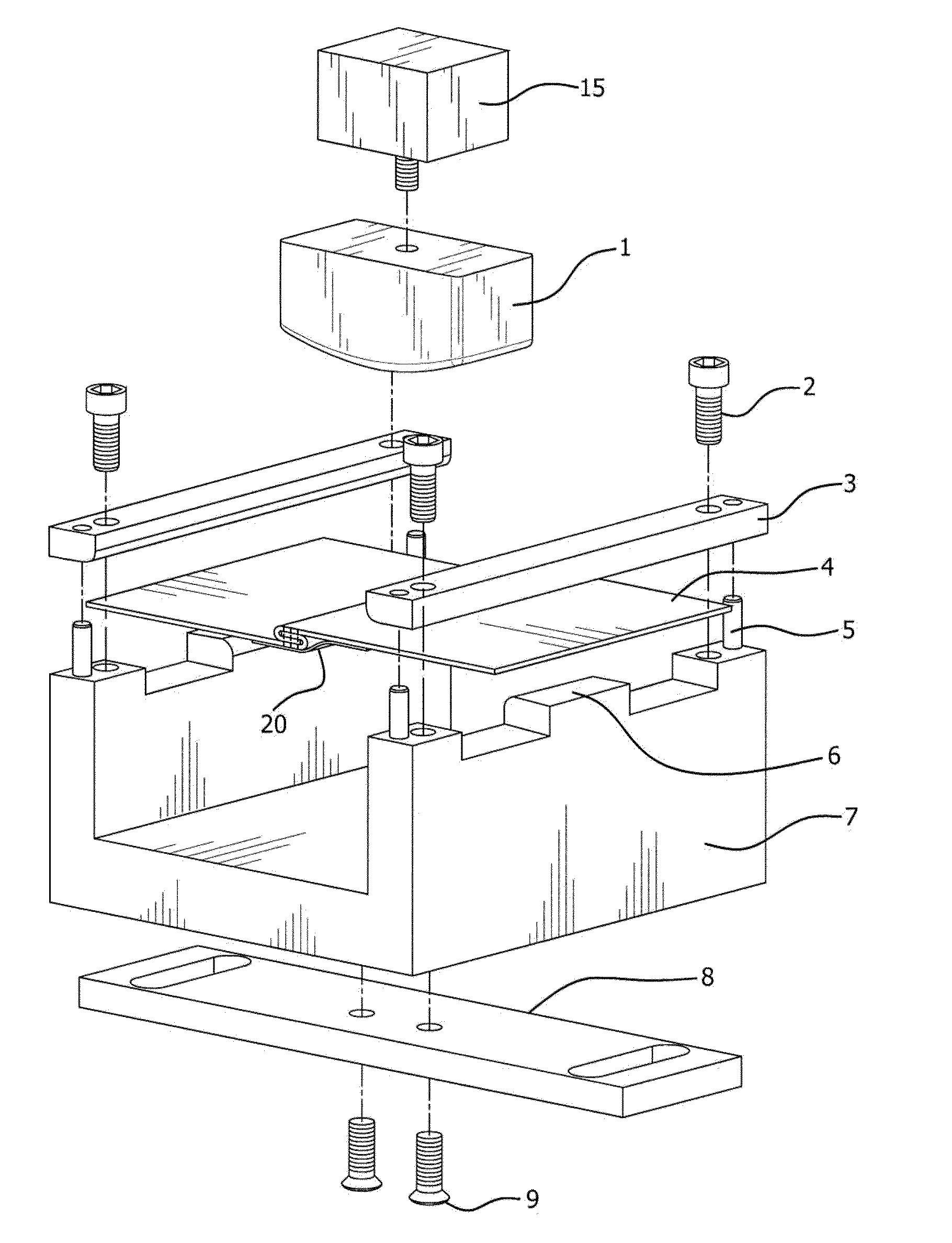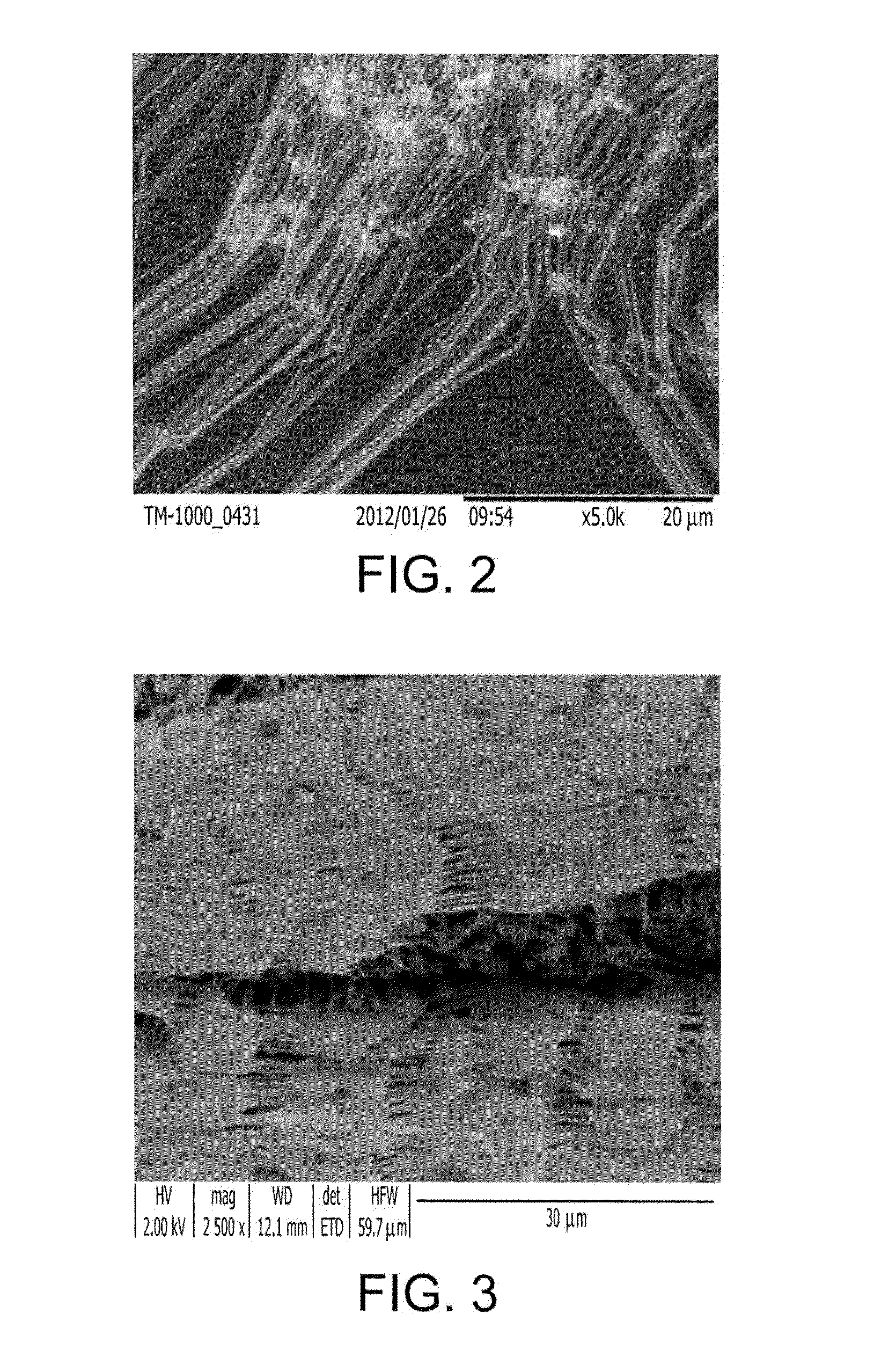Seam-sealed filters and methods of making thereof
a seam tape and filter bag technology, applied in the field of durable seam tape filters, can solve the problems of repeated stress on the seam tape used to seal the seam bag strain in all directions, cleaning cycles over the lifetime of the filter bag, etc., to achieve the effect of dissipating static charge from the bag and being sufficiently conductiv
- Summary
- Abstract
- Description
- Claims
- Application Information
AI Technical Summary
Benefits of technology
Problems solved by technology
Method used
Image
Examples
example 1
[0142]To manufacture an ePTFE / FEP composite film according to the present invention, a PTFE fine powder suitable for paste extrusion and expansion from the E.I. Dupont Company of Wilmington, Del. was used as a raw material. The PTFE fine Powder was blended with Isopar K (from Exxon Mobil Corp., Fairfax, Va.) in the proportion of 0.218 g. / g. of fine powder. The lubricated powder was compressed in a cylinder to form a pellet and placed into an oven set at 49° C. for sufficient dwell time to bring the pellet to temperature. The compressed and heated pellet was then ram extruded to produce a tape that was then calendared to approximately 40% of its original thickness. The lubricant was then driven off by heating. The tape then underwent a longitudinal expansion of 1.4:1 ratio. The tape was then subjected to transverse expansion (6:1) followed by a 380 C sintering while restrained. The resulting enthalpy ratio was 0.15 and the resulting transverse matrix modulus was 17,819 psi.
[0143]A cu...
example 2
[0146]An ePTFE / FEP composite tape was prepared as similarly described in Example 1. A PTFE fine powder suitable for paste extrusion and expansion from the E.I. DuPont Company of Wilmington, Del. was used as a raw material. The PTFE fine Powder was blended with Isopar K (from Exxon Mobil Corp., Fairfax, Va.) in the proportion of 0.193 g. / g. of fine powder. The lubricated powder was compressed in a cylinder to form a pellet and placed into an oven set at 49° C. for sufficient dwell time to bring the pellet to temperature. The compressed and heated pellet was then ram extruded into the form of a tape. The tape was then doubled up and calendared to a thickness that is approximately 33% of its original combined thickness. The lubricant was then driven off by heating. The tape then underwent a longitudinal expansion of 1.73:1 ratio. The tape was then subjected to transverse expansion (11.7:1) followed by a 380 C sintering while restrained. The resultant material had an enthalpy ratio of 0...
example 3
[0150]An ePTFE / FEP composite tape was prepared as similarly described in Example 1. A PTFE fine powder suitable for paste extrusion and expansion from Daiken Industries was used as a raw material. The PTFE fine Powder was blended with Isopar K (from Exxon Mobil Corp., Fairfax, Va.) in the proportion of 0.184 g. / g. of fine powder. The lubricated powder was compressed in a cylinder to form a pellet and placed into an oven set at 49° C. for sufficient dwell time to bring the pellet to temperature. The compressed and heated pellet was then ram extruded into the form of a tape. The lubricant was then driven off by heating. The resultant dry tape then went through a longitudinal expansion ratio of 10:1. The resultant material has a transverse direction matrix modulus of 15,234 psi. The tape then underwent a lamination process similar to what was described in U.S. Pat. No. 5,554,236. The tape was laminated to 5.0 mil FEP-100 film across heated surfaces at a temperature set to 310 C and a l...
PUM
| Property | Measurement | Unit |
|---|---|---|
| temperature | aaaaa | aaaaa |
| Density | aaaaa | aaaaa |
| temperatures | aaaaa | aaaaa |
Abstract
Description
Claims
Application Information
 Login to View More
Login to View More - R&D
- Intellectual Property
- Life Sciences
- Materials
- Tech Scout
- Unparalleled Data Quality
- Higher Quality Content
- 60% Fewer Hallucinations
Browse by: Latest US Patents, China's latest patents, Technical Efficacy Thesaurus, Application Domain, Technology Topic, Popular Technical Reports.
© 2025 PatSnap. All rights reserved.Legal|Privacy policy|Modern Slavery Act Transparency Statement|Sitemap|About US| Contact US: help@patsnap.com



